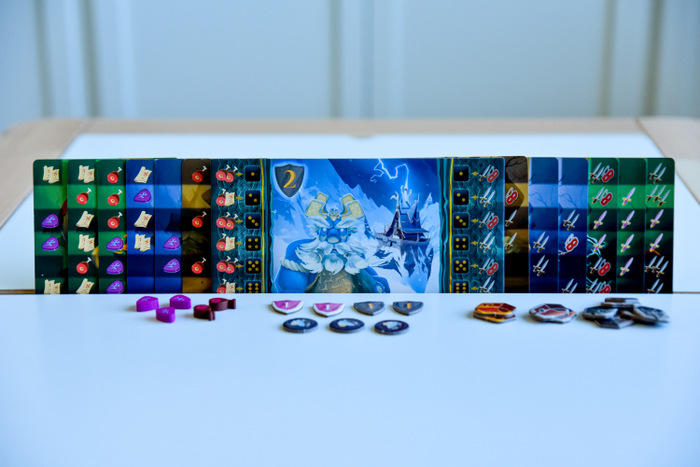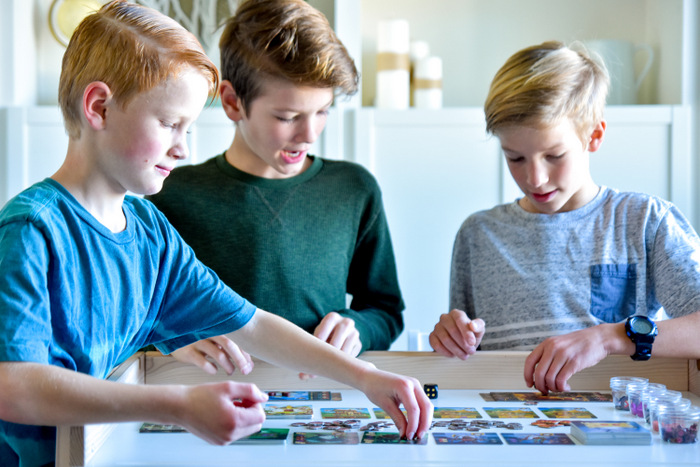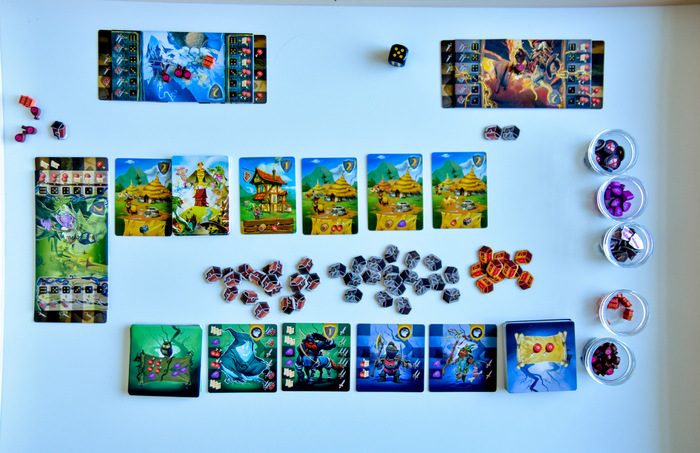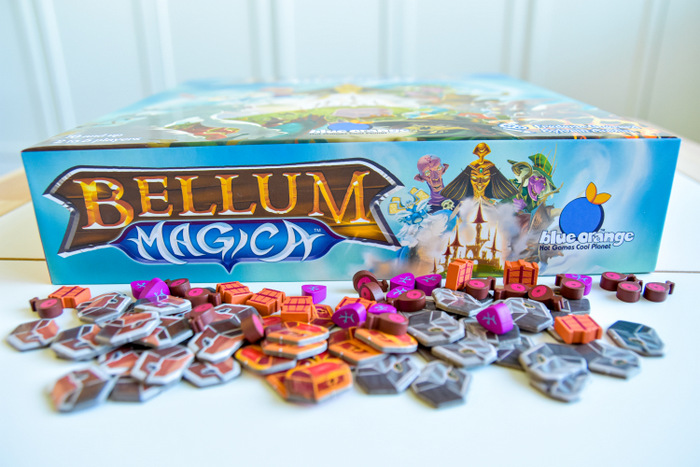Our family loves strategy games, and when we want something light and quick with lots of chance, interaction, and excellent design/visual elements, we choose Bellum Magica! It’s the perfect family strategy game for 2-5 players ages 10+ and it plays in about 30 minutes. Less if dinner’s on the table and everyone is hungry but the game must go on!
The objective of the game is to earn treasure. There are wooden, metal, and gold chest tokens, each worth increasing point values. Once a player takes their 10th treasure chest, the game ends and the player with the most treasure wins!
Set up is simple – each player chooses a castle tile and two Goblin cards. Each castle tile has
- a left side –> production and exploration
- a right –> attacking
The left side shows each possible dice outcome, 1-6, and the resources a player would gain when each number is rolled. Same for the right side but for swords/attacking abilities. Each player starts with two Goblin cards, the yellow resource/attack just to the left and right of the castle tile, as shown in the picture above. As players recruit more creature cards throughout the game, their ability to gain resources and attack grows!
Bellum Magica is played in successive turns with each turn consisting of several actions.
First, the captain rolls the dice to #1 CHOOSE THE ACTIVE HORDE, or the set of resources/attacking abilities used for all players for the entire the round.
If the captain rolls a number you don’t like, you can play a barrel, effectively intoxicating him and tricking him into rolling again. Players can keep playing barrels in turn order until a satisfactory roll is achieved or players run out of barrels. The captain can also play a barrel on himself OR use a confusion spell to reroll.
Once the active horde is determined and all shenanigans cease, play moves to action #2 GATHER RESOURCES. Players all take the food and glyphs collected by their castle’s active horde (based on the dice roll).
#3 CALL BACK SCOUTS. Identify and count the treasure maps in the active horde. The player with the most treasure gets to choose a metal chest from the bank. If two players tie, they each choose a wooden chest.
#4 ATTACK either the human kingdom OR another player’s castle. The human kingdom is made from a tableau of five cards, each showing an attacking strength in the shield at the top and resources at the bottom. A player must have a number of swords equal to or greater than that number in their active horde to win the attack and gain the resources listed at the bottom of the card. Once a kingdom card is attacked, it is discarded and the tableau is not refilled until the end of the round.
Players can also attack another player’s castle. Each castle has an attacking strength and a player must have a number of swords equal to or greater than that number in their active horde to win the attack AND have thieves (a mask, pictured next to the swords on the right side of the castle). One chest of any kind can be stolen if a successful attack is mounted PER thief in the active horde.

Each time a player has a chest stolen from him, he wins a Shield Token worth 1 which is added to their castle’s total strength. It won’t be so easy next time!
#5 RECRUIT CREATURES Creature cards can now be purchased using food and glyphs earned during other phases of the round. Players can recruit as many creatures as they can purchase and there are two different types – Evil Creatures that cost 2 food tokens OR Most Evil Creatures that cost either 1 glyph + 4 food tokens OR 3 glyphs.
Creatures are placed either to the right for additional attacking strength OR to the left for increased resource production. It’s your choice. May luck be on your side!!
The final phase is #6 END OF THE TURN. Refill the kingdom card tableau and the next player becomes the captain, ready to roll for a new active horde, attack, recruit, and collect treasure!
Players have to balance building up resource production with attacking strength. Which is better to do when? There is a lot of strategic decision making involved, with just a little bit of luck. Players can learn through play about probability, strategy, decision making, arithmetic, and more. Thanks to Blue Orange Games for sharing this wonderful family strategy game with us!















